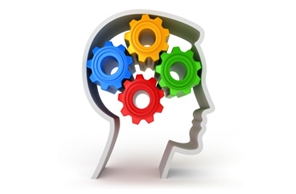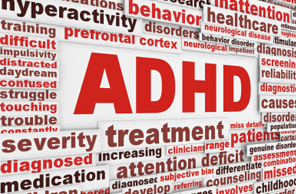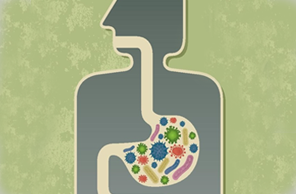ADHD Research
Gaze maintenance and autism spectrum disorder.
Click Here
.
ADHD subjects fail to suppress eye blinks and microsaccades while anticipating visual stimuli but recover with medication.
Click Here
.
Effect of visual attention on postural control in children with attention-deficit/hyperactivity disorder
Click Here
Click Here
.
ADHD subjects fail to suppress eye blinks and microsaccades while anticipating visual stimuli but recover with medication.
Click Here
.
Effect of visual attention on postural control in children with attention-deficit/hyperactivity disorder
Click Here
.
Saccadic movements of the eyes in children with attention deficit and hyperactivity syndrome.
Click Here
Click Here
.
Symptoms in children with convergence insufficiency: before and after treatment.
Click Here
Click Here
.
Academic behaviors in children with convergence insufficiency with and without parent-reported ADHD.
Click Here
Click Here
.
Altered performance on an ocular fixation task in attention-deficit/hyperactivity disorder
Click Here
Click Here
.
Diagnose ADHD, Autism and Dyslexia with eye tracking
Click HereSaccadometry: the possible application of latency distribution measurement for monitoring concussion
Click Here
Development of Cortical Asymmetry in Typically Developing Children and Its Disruption in Attention-Deficit/Hyperactivity Disorder
Click Here
The Brain: How The Brain Rewires Itself
Click Here
Associations between cerebral blood-flow measured by single photon emission computed tomography (SPECT), electro-encephalogram (EEG), behaviour symptoms, cognition and neurological soft signs in children with attention-deficit hyperactivity disorder (ADHD).
Click Here
Training helps dyslexic brains behave ‘normally’
Click Here
The influences of environmental enrichment, cognitive enhancement, and physical exercise on brain development: Can we alter the developmental trajectory of ADHD?
Click Here
Hypofrontality in Attention Deficit Hyperactivity Disorder During Higher-Order Motor Control: A Study With Functional MRI
Click Here
Cortical Asymmetry and Learning Efficiency A Direction for the Rehabilitation Process
Click Here
The integration of the neurosciences, child public health, and education practice: hemisphere-specific remediation strategies as a discipline partnered rehabilitation tool in ADD/ADHD
Click Here
Elevated Gluten Antibodies Found in Children with Autism
Click Here
Nutritional and Environmental Approaches to Preventing and Treating Autism and Attention Deficit Hyperactivity Disorder (ADHD): A Review
Click Here
Functional Brain Organization In Developmental Dyslexia
Click Here
Altered cortico-striatal–thalamic connectivity in relation to spatial working memory capacity in children with ADHD
Click Here
Associations between cerebral blood-flow measured by single photon emission computed tomography (SPECT), electro-encephalogram (EEG), behaviour symptoms, cognition and neurological soft signs in children with attention-deficit hyperactivity disorder (ADHD).
Click Here
Oculomotor neurorehabilitation for reading in mild traumatic brain injury (mTBI): An integrative approach
Click Here
The Integration of the Neurosciences, Child Public Health, and Education Practice: Hemisphere-Specific Remediation Strategies as a Discipline Partnered Rehabilitation Tool in ADD/ADHD.
Click Here
The effect of hemisphere specific remediation strategies on the academic performance outcome of children with ADD/ADHD.
Click Here
Saccadic movements of the eyes in children with attention deficit and hyperactivity syndrome.
Click Here
Core Symptoms of Autism Improved After Vitamin D Supplementation
Click Here
Click HereSaccadometry: the possible application of latency distribution measurement for monitoring concussion
Click Here
Development of Cortical Asymmetry in Typically Developing Children and Its Disruption in Attention-Deficit/Hyperactivity Disorder
Click Here
The Brain: How The Brain Rewires Itself
Click Here
Associations between cerebral blood-flow measured by single photon emission computed tomography (SPECT), electro-encephalogram (EEG), behaviour symptoms, cognition and neurological soft signs in children with attention-deficit hyperactivity disorder (ADHD).
Click Here
Training helps dyslexic brains behave ‘normally’
Click Here
The influences of environmental enrichment, cognitive enhancement, and physical exercise on brain development: Can we alter the developmental trajectory of ADHD?
Click Here
Hypofrontality in Attention Deficit Hyperactivity Disorder During Higher-Order Motor Control: A Study With Functional MRI
Click Here
Cortical Asymmetry and Learning Efficiency A Direction for the Rehabilitation Process
Click Here
The integration of the neurosciences, child public health, and education practice: hemisphere-specific remediation strategies as a discipline partnered rehabilitation tool in ADD/ADHD
Click Here
Elevated Gluten Antibodies Found in Children with Autism
Click Here
Nutritional and Environmental Approaches to Preventing and Treating Autism and Attention Deficit Hyperactivity Disorder (ADHD): A Review
Click Here
Functional Brain Organization In Developmental Dyslexia
Click Here
Altered cortico-striatal–thalamic connectivity in relation to spatial working memory capacity in children with ADHD
Click Here
Associations between cerebral blood-flow measured by single photon emission computed tomography (SPECT), electro-encephalogram (EEG), behaviour symptoms, cognition and neurological soft signs in children with attention-deficit hyperactivity disorder (ADHD).
Click Here
Oculomotor neurorehabilitation for reading in mild traumatic brain injury (mTBI): An integrative approach
Click Here
The Integration of the Neurosciences, Child Public Health, and Education Practice: Hemisphere-Specific Remediation Strategies as a Discipline Partnered Rehabilitation Tool in ADD/ADHD.
Click Here
The effect of hemisphere specific remediation strategies on the academic performance outcome of children with ADD/ADHD.
Click Here
Saccadic movements of the eyes in children with attention deficit and hyperactivity syndrome.
Click Here
Core Symptoms of Autism Improved After Vitamin D Supplementation
Click Here
1. Study: ADHD Linked to Asthma and Allergies
 Results of a recent study published in the August 2013 issue of the Annals of Allergy, Asthma, and Immunology link ADHD symptoms in boys to higher instances of asthma, allergies, and skin infections. A Health Day article (1) detailing results of the study shared the following:”Boys diagnosed with attention-deficit/hyperactivity disorder are more likely also to have asthma, allergies and skin infections than youngsters without ADHD”, a new study finds, suggesting a possible link between these conditions. Of those in the study, boys newly diagnosed with ADHD were 40 percent more likely to have asthma, 50 percent more likely to have needed a prescription for allergy medicine and 50 percent more likely to have had a bacterial skin infection than other boys.’Our study provides additional evidence to support the hypothesis that atopic disorders, such as asthma and food allergies increase the risk of developing ADHD,’ the authors wrote, adding that further research is necessary to determine just how these conditions might be connected…The authors theorize that the links they found may be food-allergy related. However, this study didn’t attempt to prove cause and effect, so the exact reason behind the association remains unknown.Dr. Andrew Adesman, chief of developmental and behavioral pediatrics at Steven and Alexandra Cohen Children’s Medical Center of New York, said the connection between ADHD and allergic diseases has been seen in other studies.’The association seems to be real. The chicken-and-the-egg question remains unanswered. The challenge is in teasing out why they’re linked,’ he said.”Source: (1) Health Day (2013, August 23), Allergies, Asthma Show Links to ADHD: Study
Results of a recent study published in the August 2013 issue of the Annals of Allergy, Asthma, and Immunology link ADHD symptoms in boys to higher instances of asthma, allergies, and skin infections. A Health Day article (1) detailing results of the study shared the following:”Boys diagnosed with attention-deficit/hyperactivity disorder are more likely also to have asthma, allergies and skin infections than youngsters without ADHD”, a new study finds, suggesting a possible link between these conditions. Of those in the study, boys newly diagnosed with ADHD were 40 percent more likely to have asthma, 50 percent more likely to have needed a prescription for allergy medicine and 50 percent more likely to have had a bacterial skin infection than other boys.’Our study provides additional evidence to support the hypothesis that atopic disorders, such as asthma and food allergies increase the risk of developing ADHD,’ the authors wrote, adding that further research is necessary to determine just how these conditions might be connected…The authors theorize that the links they found may be food-allergy related. However, this study didn’t attempt to prove cause and effect, so the exact reason behind the association remains unknown.Dr. Andrew Adesman, chief of developmental and behavioral pediatrics at Steven and Alexandra Cohen Children’s Medical Center of New York, said the connection between ADHD and allergic diseases has been seen in other studies.’The association seems to be real. The chicken-and-the-egg question remains unanswered. The challenge is in teasing out why they’re linked,’ he said.”Source: (1) Health Day (2013, August 23), Allergies, Asthma Show Links to ADHD: Study.
2. Study Reveals Brain Structure Differences in Kids with SPD
 MRI results from a research study at UC San Francisco reveal that the brain structure of kids with Sensory Processing Disorder, also called SPD or Sensory Integration Dysfunction, is different from those without the disorder. For the first time, researchers have been able to identify a potential biological marker in kids with sensory processing problems. UCSF’s website shares the following about the study (1):
MRI results from a research study at UC San Francisco reveal that the brain structure of kids with Sensory Processing Disorder, also called SPD or Sensory Integration Dysfunction, is different from those without the disorder. For the first time, researchers have been able to identify a potential biological marker in kids with sensory processing problems. UCSF’s website shares the following about the study (1):“The study examined 16 boys, between the ages of eight and 11, with SPD but without a diagnosis of autism or prematurity, and compared the results with 24 typically developing boys who were matched for age, gender, right- or left-handedness and IQ. The patients’ and control subjects’ behaviors were first characterized using a parent report measure of sensory behavior called the Sensory Profile.
The imaging detected abnormal white matter tracts in the SPD subjects, primarily involving areas in the back of the brain, that serve as connections for the auditory, visual and somatosensory (tactile) systems involved in sensory processing, including their connections between the left and right halves of the brain.
‘These are tracts that are emblematic of someone with problems with sensory processing,’ said Mukherjee. ‘More frontal anterior white matter tracts are typically involved in children with only ADHD or autistic spectrum disorders. The abnormalities we found are focused in a different region of the brain, indicating SPD may be neuroanatomically distinct.'”
While it is generally accepted that children with Asperger Syndrome, ADHD, and Anxiety Disorders have trouble integrating sensory input, Sensory Processing Disorder isn’t yet recognized as a stand-alone diagnosis. Researchers believe this study could lead to SPD being included in The Diagnostic and Statistical Manual of Mental Disorders from the American Psychiatric Association as a stand-alone disorder.
Most children can seem quirky or particular about their likes and dislikes, but children with Sensory Processing Disorder will be so severely affected by their sensory preferences that it interferes with their normal, everyday functioning, relationships, and learning. Sensory issues are usually defined as either hypersensitivity (over-responsiveness) or hyposensitivity (under-responsiveness) to sensory stimuli. Learn more about SPD here.
Source: (1) UC San Francisco (2013, July 9), Breakthrough Study Reveals Biological Basis for Sensory Processing Disorder in Kids
.
3. Study: ADHD Drugs Don’t Lead To Better Grades
 Many parents and kids dealing with symptoms of ADHD believe that drugs like Ritalin and Adderall lead to better grades in school. However, a recent study that examined the grades and school performances of nearly 4000 kids with ADHD in Quebec over an 11 year period found no significant benefit in school performance for kids who took ADHD drugs compared to those who didn’t. An article from The Wall Street Journal shared the following(1):
Many parents and kids dealing with symptoms of ADHD believe that drugs like Ritalin and Adderall lead to better grades in school. However, a recent study that examined the grades and school performances of nearly 4000 kids with ADHD in Quebec over an 11 year period found no significant benefit in school performance for kids who took ADHD drugs compared to those who didn’t. An article from The Wall Street Journal shared the following(1):“A June study looked at medication usage and educational outcomes of nearly 4,000 students in Quebec over an average of 11 years and found that boys who took ADHD drugs actually performed worse in school than those with a similar number of symptoms who didn’t. Girls taking the medicine reported more emotional problems, according to a working paper published on the website of the National Bureau of Economic Research, a nonprofit economics research firm.
‘The possibility that [medication] won’t help them [in school] needs to be acknowledged and needs to be closely monitored,’ says economics professor Janet Currie, an author on the paper and director of the Center for Health & Wellbeing, a health policy institute at Princeton University. Kids may not get the right dose to see sustained benefits, or they may stop taking the medication because side effects or other drawbacks outweigh the benefits, she says.”
Source: (1) Wall Street Journal Online (2013, July 8), ‘ADHD Drugs Don’t Boost Kids’ Grades’
.
4. Study: Brain Pathways of Kids with Autism Are Hyper-connected
 According to a small study published in the June 26 online issue of JAMA Psychiatry, certain brain pathways are hyper connected in kids with autism. A recent article from Health Day shared the following about the study (1):
According to a small study published in the June 26 online issue of JAMA Psychiatry, certain brain pathways are hyper connected in kids with autism. A recent article from Health Day shared the following about the study (1):“Children with autism may have higher-than-normal connectivity between certain areas of the brain, suggests a small study that hints brain imaging might someday be used to diagnose the developmental disorder. The findings come from MRI brain scans of 20 children with autism spectrum disorders and 20 children without autism. Researchers found that those with an autism spectrum disorder showed ‘hyperconnectivity’ along five major brain networks…
‘The way different areas within those brain networks talk to each other is quite different in children with autism, compared with typically developing children,’ said senior researcher Vinod Menon, a professor of psychiatry and behavioral sciences at Stanford University School of Medicine in California.
One network, called the salience network, showed the most hyperconnectivity — which basically means a greater-than-normal number of brain areas are activated at the same time. The salience network helps the brain decide which part of our environment deserves our attention at any given moment.
Menon’s team found that the more hyperconnectivity kids with autism had in the salience network, the more severe their ‘restrictive’ and repetitive behaviors.”
Source: (1) Health Day, U.S. News and World Report (2013, June 26), ‘Hyperconnectivity’ Seen In Brains of Children with Autism
.
5. Studies Link ADHD to Obesity and Longer-Lasting Head Injury
 Two new studies link ADHD symptoms in childhood to obesity later in life and longer-lasting effects after a head injury. Find more about these studies below!
Two new studies link ADHD symptoms in childhood to obesity later in life and longer-lasting effects after a head injury. Find more about these studies below!ADHD and Obesity
A 33 year study from the medical journal Pediatrics published on May 20, 2013 shows men diagnosed with ADHD in childhood had significantly higher rates of obesity than those without an ADHD diagnosis. Pacific Standard Magazine shared the following about the study:
“Researchers surveyed two groups of 41-year-old men and found those with a history of ADHD were 19 pounds heavier than their non-ADHD counterparts, on average…
Data for the new study came from 207 white boys with ADHD who were referred to a research clinic at around age eight and followed as they grew up. Ten years later another group of teenage boys without ADHD, who were otherwise similar to the original participants, were added to the study. By the time they were asked to report their weight at age 41, 111 men from each group were still in the study.
On that survey, men with a history of ADHD reported weighing 213 pounds, on average, and 41 percent of them were obese. In comparison, men without ADHD weighed in at an average of 194 pounds, and 22 percent qualified as obese, Dr. F. Xavier Castellanos from the Child Study Center at NYU Langone Medical Center in New York and his colleagues wrote in Pediatrics.
‘As we learn more about the regions of the brain that may be implicated in obesity, they overlap with brain regions implicated in ADHD,’ Castellanos told Reuters Health. ‘The reward system seems to be relevant to both conditions.’ In addition, he added, ‘There is the speculation that the obesity is at least partly reflecting some of the impulsivity, poor planning, and the difficulty in making choices’ that come with ADHD.”
For more information on this fascinating study, read the rest of the article from Pacific Standard Magazine here!
ADHD and Head Injury
A study from the June 25, 2013 edition of the Journal of Neurosurgery: Pediatrics shows children with ADHD, who are often characterized as impulsive risk takers, are more likely to sustain a moderate disability after a mild traumatic brain injury. Researchers are recommending that children diagnosed with ADHD avoid contact sports in which risk of injury is higher. An article about the study from Health Day states:
“In the new study, Greene and her colleagues reviewed medical charts of all patients at Children’s Hospital of Pittsburgh who had ADHD and were diagnosed with a mild traumatic brain injury between 2003 and 2010. Forty-eight of these children were compared with a control group of 45 children without ADHD who had also sustained a mild traumatic brain injury.
The researchers found that 25 percent of the ADHD group suffered a moderate disability, and 56 percent had completely recovered after a nearly six-month follow-up period. In contrast, among the patients without ADHD, only 2 percent suffered a moderate disability and 84 percent had completely recovered after a much shorter follow-up of seven weeks. Moderate disability was defined as needing supervision or help for physical or behavioral problems, or having residual problems with learning or functioning.”
.
6. Elevated Antibodies to Gluten Found in Kids with Autism
 A study from researchers at Columbia University Medical Center shows elevated levels of gluten antibodies in kids with autism. An article from Newswise about the study shares the following (1):
A study from researchers at Columbia University Medical Center shows elevated levels of gluten antibodies in kids with autism. An article from Newswise about the study shares the following (1):Researchers have found elevated antibodies to gluten proteins of wheat in children with autism in comparison to those without autism. The results also indicated an association between the elevated antibodies and the presence of gastrointestinal symptoms in the affected children. They did not find any connection, however, between the elevated antibodies and celiac disease, an autoimmune disorder known to be triggered by gluten…
“This is the first study to systematically look at serologic and genetic markers of celiac disease and gluten sensitivity in such well-characterized cohorts of autism patients and controls,” said Peter H. R. Green, MD, director of the Celiac Disease Center at Columbia University Medical Center and one of the study authors. “But the findings need to be confirmed in larger cohorts…”
Armin Alaedini, PhD who headed the study indicated that larger studies could lead to a better understanding of this immune response to gluten helping to uncover new clues about autism and possibly helping identify biomarkers for a subset of patients who may respond to specific treatment strategies.
Source: (1) Newswise — NEW YORK, NY (June 20, 2013) Elevated Gluten Antibodies Found in Children with Autism
.
7. Study: Gut Bacteria Affects Brain Function
 A recent study from researchers at UCLA links gut bacteria to brain function, underscoring Brain Balance’s assertion that diet has a direct and significant impact on behavior. The small study found that women who regularly consumed probiotics found in yogurt showed altered brain function while in a state of rest and in response to emotion recognition tasks. Read an excerpt below from the UCLA Health online magazine (1), or click here to read the original article in its entirety.
A recent study from researchers at UCLA links gut bacteria to brain function, underscoring Brain Balance’s assertion that diet has a direct and significant impact on behavior. The small study found that women who regularly consumed probiotics found in yogurt showed altered brain function while in a state of rest and in response to emotion recognition tasks. Read an excerpt below from the UCLA Health online magazine (1), or click here to read the original article in its entirety.“…The small study involved 36 women between the ages of 18 and 55. Researchers divided the women into three groups: one group ate a specific yogurt containing a mix of several probiotics — bacteria thought to have a positive effect on the intestines — twice a day for four weeks; another group consumed a dairy product that looked and tasted like the yogurt but contained no probiotics; and a third group ate no product at all….
During the resting brain scan, the women consuming probiotics showed greater connectivity between a key brainstem region known as the periaqueductal grey and cognition-associated areas of the prefrontal cortex. The women who ate no product at all, on the other hand, showed greater connectivity of the periaqueductal grey to emotion- and sensation-related regions, while the group consuming the non-probiotic dairy product showed results in between.
The researchers were surprised to find that the brain effects could be seen in many areas, including those involved in sensory processing and not merely those associated with emotion, Tillisch said.
The UCLA researchers are seeking to pinpoint particular chemicals produced by gut bacteria that may be triggering the signals to the brain. They also plan to study whether people with gastrointestinal symptoms such as bloating, abdominal pain and altered bowel movements have improvements in their digestive symptoms which correlate with changes in brain response.
Meanwhile, Mayer notes that other researchers are studying the potential benefits of certain probiotics in yogurts on mood symptoms such as anxiety. He said that other nutritional strategies may also be found to be beneficial…”
Source: (1) UCLA, Health Sciences (2013, May 29). Changing gut bacteria through diet affects brain function.
.
8. Study: Environmental Enrichment Reduces Autism Symptoms
 Results from an autism study in the May 2013 issue of Behavioral Neuroscience show environmental enrichment strategies reduce autism symptoms in boys ages 3 to 12. After six months of an environmental enrichment program that included olfactory and tactile stimulation, the enriched group showed clinically significant improvement of symptoms at a rate of 42% compared with 7% of the control group. Additionally, 69% of parents of kids in the enriched group reported improvement, compared with only 31% of the control group. Researchers are now conducting a larger study that includes girls with autism. Click here to read more about this important and promising study.
Results from an autism study in the May 2013 issue of Behavioral Neuroscience show environmental enrichment strategies reduce autism symptoms in boys ages 3 to 12. After six months of an environmental enrichment program that included olfactory and tactile stimulation, the enriched group showed clinically significant improvement of symptoms at a rate of 42% compared with 7% of the control group. Additionally, 69% of parents of kids in the enriched group reported improvement, compared with only 31% of the control group. Researchers are now conducting a larger study that includes girls with autism. Click here to read more about this important and promising study..
9. Multiple Brain Areas Work Together To Make Reading Possible
 A recent study that included a combination of brain scans and reading tests showed multiple brain areas must work together to make reading possible. Since October 2013 is National Dyslexia Awareness Month, we invite you to share this fascinating research. A recent article about the study from Domain-b.com shared the following:
A recent study that included a combination of brain scans and reading tests showed multiple brain areas must work together to make reading possible. Since October 2013 is National Dyslexia Awareness Month, we invite you to share this fascinating research. A recent article about the study from Domain-b.com shared the following:“…The small study involved 36 women between the ages of 18 and 55. Researchers divided the women into three groups: one group ate a specific yogurt containing a mix of several probiotics — bacteria thought to have a positive effect on the intestines — twice a day for four weeks; another group consumed a dairy product that looked and tasted like the yogurt but contained no probiotics; and a third group ate no product at all….
“The findings open up the possibility that individuals who have difficulty reading may only need additional training for specific parts of the brain – targeted therapies that could more directly address their individual weaknesses.
‘Reading is a complex task. No single part of the brain can do all the work,’ says Qinghua He, postdoctoral research associate at the University of Southern California (USC) Brain and Creativity Institute.
The study looked at the correlation between reading ability and brain structure revealed by high-resolution magnetic resonance imaging (MRI) scans of more than 200 participants…
‘Our results strongly suggest that reading consists of unique capacities and is supported by distinct neural systems that are relatively independent of general cognitive abilities,’ says Gui Xue, corresponding author of the study. Xue was formerly a research assistant professor at USC and now is a professor and director of the Center for Brain and Learning Sciences at Beijing Normal University.
‘Although there is no doubt that reading has to build up existing neural systems due to the short history of written language in human evolution, years of reading experiences might have finely tuned the system to accommodate the specific requirement of a given written system,’ Xue adds.”
